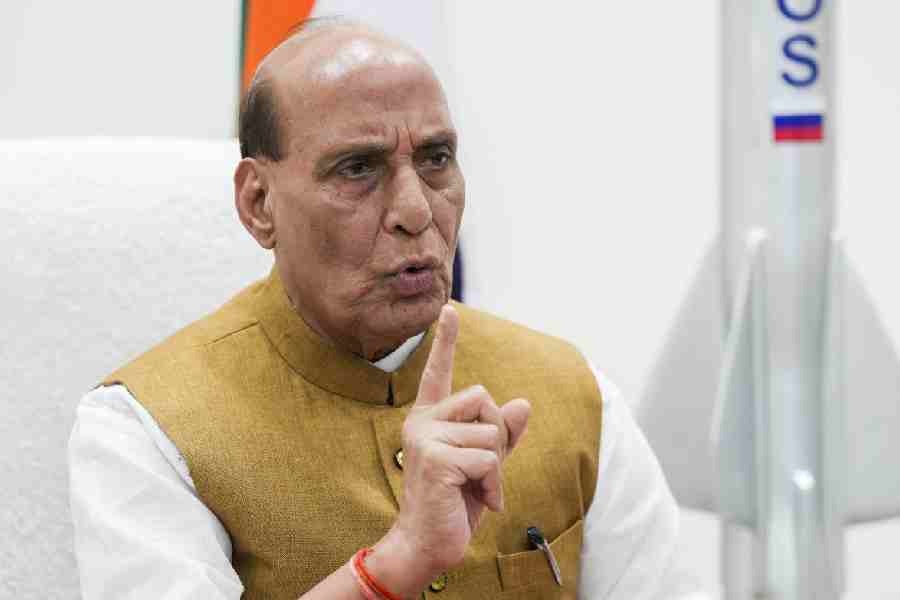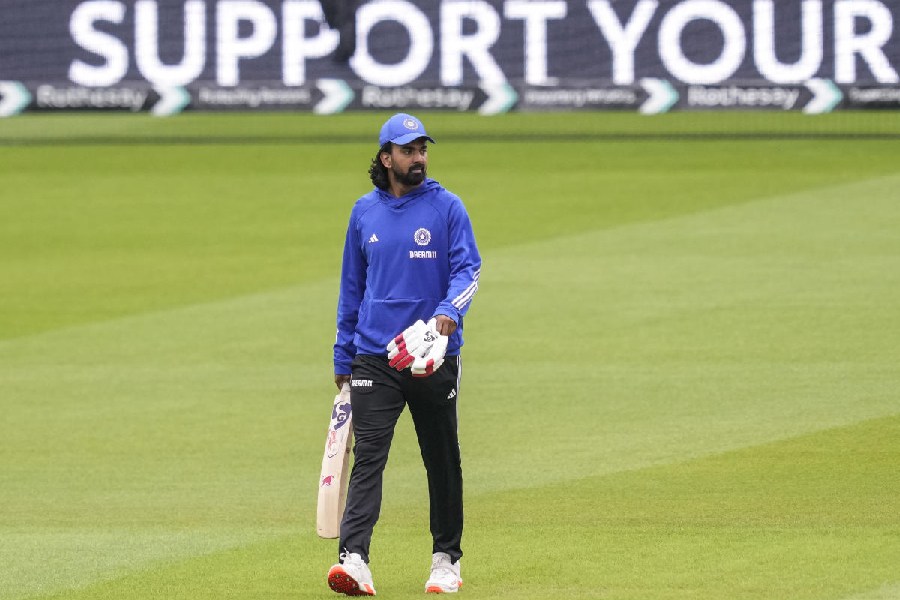 |
New Delhi, Dec. 7: The Mumbai terror attacks have unleashed a fresh round of sniping between our many defence and security agencies over alleged intelligence lapses — information that was either not picked up in the first place or information that was available but was not interpreted or acted upon.
Intelligence comes off a complex and elaborate network that extends down from the chiefs of various wings, mostly headquartered in New Delhi, down to faceless — and mostly plainclothed — operatives at the grassroots.
What goes under the omnibus and often loosely-used term “intelligence network” is a vast and variegated workforce that is meant to shore up information from a variety of fields ranging from drugs to markets and revenues and industry to diplomacy to defence preparedness to internal security and the activities of politicians and political parties themselves.
Very often — as the Mumbai terror attacks have brought home to us again — intelligence gathering not only needs to cut across various wings, the inputs also need to be pooled and processed in order to give the consumer — in this case the government — the ability to locate and neutralise possible threats.
The set-up
At the apex of the intelligence network is the Prime Minister himself, but in a day-to-day sense, the hands-on intelligence boss is meant to be the national security adviser (NSA), an office institutionalised during Atal Bihari Vajpayee’s premiership and currently occupied by M.K. Narayanan.
The chief internal security snoop network is the Intelligence Bureau (IB). Beyond its official ranks, the IB works with what is known as “human intelligence”, an informal and paid network of informers. These informers or “assets” are cultivated by intelligence officers in the subsidiary intelligence bureaux (SIB) spread across the country.
Intelligence officers in touch with the ground give their inputs to assistant chief intelligence officers and chief intelligence officers. They, in turn, pass inputs to assistant directors and the flow terminates, at the state level, with the joint director of the SIB.
The flow goes up from various states to the IB director, whose office, in turn, is meant to redirect or distribute information wherever it is relevant — state governments, other government wings etc.
Information on the Mumbai strike, or its preparations, for instance, should ideally have reached one or more of the two dozen joint directors at the IB headquarters, before being passed on or shared.
The IB has dedicated desks to keep watch on activities related to Pakistan, Kashmir, the Northeast, Naxalites, Punjab and minority affairs.
A similar set-up exists in the country’s external intelligence agency, the Research and Analysis Wing (RAW), which is headed by a secretary-level officer assisted by four special secretaries, two additional secretaries and several joint secretaries. There is also the Aviation Research Centre (ARC) that provides air intelligence, reconnaissance and transport inputs required for internal and external purposes.
Both RAW and ARC report through the cabinet secretariat to the NSA and the Prime Minister. There is also the Defence Intelligence Agency (DIA) that receives inputs from the defence forces, primarily through the office of the director-general of military intelligence (DGMI).
Technically, the IB and RAW chiefs can brief the Prime Minister directly but since the NSA’s post was institutionalised, he is the key information/intelligence gateway to the Prime Minister.
Two years ago, a new body called the National Technical Research Organisation (NTRO) was set up with a view to enhancing India’s technical intelligence. The NTRO has remained an unevolved entity.
We also have financial intelligence reaching the finance, home and external affairs ministries through the Financial Intelligence Unit (FIU) of the ministry of economic affairs, the Directorate of Revenue Intelligence (DRI) and the Customs. Even as Prime Minister Manmohan Singh vowed that the government would snap fund flow to terror groups, there is said to be little co-ordination or information-sharing among the financial intelligence agencies and the other ministries.
Then we have intelligence flowing in from the Narcotics Control Board (NCB) on the narcotics trade and its overlap with terror networks. Paramilitary forces like the BSF and the ITBP have their intelligence wings. There are also the state intelligence cells or special branches in each state police force.
There exist, therefore, many streams overflowing with material and information that need to be co-ordinated and processed — either to be kept at the background or to be acted upon.
Analysts & analysis
Two major bodies exist to collate and analyse this huge data bank — the NSA backed by its secretariat and the Joint Intelligence Committee (JIC).
The JIC comprises officers from various intelligence agencies and so does the secretariat, headed by the NSA who is assisted by three deputy NSAs.
There is also a third body called the Multi-Agency Centre or MAC, which has representatives from all the agencies and is headed by the NSA.
After the terror attacks in Assam recently, a joint task force has been formed in the Northeast on the lines of a state-level multi-agency centre where all states in the region can co-ordinate among themselves.
There are two main kinds of intelligence inputs too — specific and actionable. These categorisations are made depending upon interpretation of information. But action on information also depends on speedy analysis and decision-making. It is here that both informers and action-taking bodies can be held accountable for failure to protect lives across the country, including Mumbai.
Information on a Pakistani threat through the sea route was available, as sources say, through September, October and November before the attacks shook Mumbai and the nation. Intelligence experts insist that if an intelligence input is received repeatedly, it needs to be treated as knowledge. “Even if it does not describe the colour of a terrorist’s clothes and the number of guns he is carrying,” says a retired IB chief. India does not have a “yellow, amber, red” rating in intelligence like the Americans and, as an IB operative said sarcastically: “Nor do we create incidents and information like the ISI.”
Whether the knowledge of a threat reached the Indian Navy brass is still a raging debate. The armed forces have argued that if the information was so critical and urgent, why did the agencies not go to the Prime Minister’s Office and complain? That, however, is part of the debate.
The fact that information existed is certain. It is also a fact that it was not considered knowledge despite repeated receipts of similar or identical inputs.
Chinks in armour
At the lowest level, the strength of assets is considered to be the major strength of any intelligence set-up. For India, which doesn’t have the luxury of huge budgets — the US spends $40 billion a year, for instance — the task is getting tougher every passing day. Besides, there are other drawbacks.
A major one is the low representation of minorities in intelligence units, something that hampers information gathering at the grassroots level. One of the reasons the terror attack in Ahmedabad was possible was that over the years Muslims had been weeded out of police special cells. This anomaly exists in varying degrees elsewhere too.
Co-ordination block
Fast processing of information and moving on it remain a huge problem. For instance, an input on a threat to Manipur will be sent by the IB to the RAW, JIC, NSA, home ministry, DG Assam Rifles, local police and home officials, perhaps even the foreign ministry since Myanmar is in the neighbourhood.
However, failures occur when decision-makers and analysts miss the point where information has translated into knowledge. That is when action is not taken and we hear accusations of lack of “specific intelligence”. Tragedy often follows.










